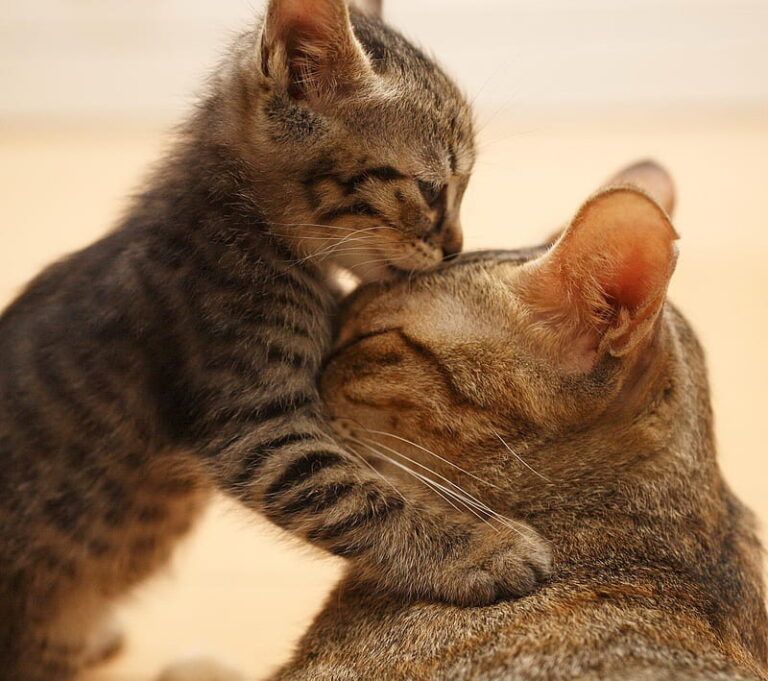Cat Senses: Hearing, Vision, and Smell
Cats are fascinating creatures with incredible senses that allow them to navigate their environment and interact with the world around them. Their sharp hearing, keen vision, and sensitive sense of smell enable them to be effective predators and agile hunters. In this blog post, we will delve into the remarkable sensory capabilities of cats, exploring how they perceive and interpret their surroundings.
Hearing: A Symphony of Sounds
Cats possess exceptional hearing that far surpasses that of humans. Their ears are designed to capture a wide range of frequencies, allowing them to detect sounds as high as 64,000 hertz (Hz), well beyond the human hearing range of 20 Hz to 20,000 Hz. This heightened auditory sensitivity enables them to hear faint noises, such as the rustling of leaves, the scurrying of prey, and the distant calls of other cats.
The structure of a cat’s ear is a marvel of engineering. It consists of three main parts: the outer ear, middle ear, and inner ear. The outer ear, composed of the pinna and ear canal, collects sound waves and funnels them into the middle ear. The middle ear contains three small bones called the malleus, incus, and stapes, which amplify the sound waves and transmit them to the inner ear. Within the inner ear, the cochlea, a spiral-shaped structure, converts the sound waves into electrical signals that are sent to the brain for interpretation.
Cats have the remarkable ability to independently rotate their ears, allowing them to pinpoint the source of a sound with great accuracy. This directional hearing is essential for hunting, as it enables them to locate prey even when it is hidden from view.
Vision: A World in Vibrant Colors
Cats have remarkable vision that allows them to navigate their surroundings with ease, even in low-light conditions. Their eyes are specially adapted to capture as much light as possible, giving them superior night vision compared to humans.
The structure of a cat’s eye is distinct from that of a human eye. The cornea, the transparent outermost layer of the eye, is more curved in cats, allowing them to focus on objects both near and far. The pupil, the black circular opening in the center of the eye, can dilate significantly, increasing the amount of light entering the eye in dim conditions.
Cats have a layer of cells called the tapetum lucidum behind their retinas. This reflective layer bounces light back onto the retina, enhancing their night vision by increasing the amount of light available for the photoreceptor cells to detect. Additionally, cats possess a higher concentration of rod cells in their retinas compared to humans, making them more sensitive to low-light conditions.
While cats are often assumed to be colorblind, recent research suggests that they do have some color vision, although it is not as sophisticated as that of humans. Cats are dichromats, meaning they have two types of cone cells in their retinas, allowing them to distinguish between blue and yellow-green colors.
Smell: A Universe of Scents
Cats have an incredibly sensitive sense of smell, which plays a vital role in their daily lives. Their noses are equipped with millions of scent receptors, far more than humans, enabling them to detect and discriminate between a vast array of odors.
The olfactory system of cats is highly complex. Air enters the nasal cavity through the nostrils, where it is filtered and warmed. The olfactory epithelium, a specialized region lined with scent receptors, detects odor molecules and sends signals to the brain for interpretation. Cats have a Jacobson’s organ, a small, specialized sensory organ located behind the roof of the mouth, which they use to detect certain odors, such as pheromones.
Cats rely on their sense of smell for a variety of purposes, including hunting, communication, and territorial marking. They use scent marking to delineate their territory and communicate with other cats, leaving behind messages about their identity, reproductive status, and availability.
Conclusion
The senses of cats are remarkable and finely tuned, allowing them to perceive their environment in ways that humans cannot. Their exceptional hearing, keen vision, and sensitive sense of smell work in unison, providing them with a comprehensive understanding of their surroundings. These sensory capabilities are essential for their survival, enabling them to hunt effectively, navigate their environment safely, and communicate with other cats. Understanding the remarkable sensory capabilities of cats offers us a deeper appreciation for these fascinating creatures and their unique perspective on the world.







